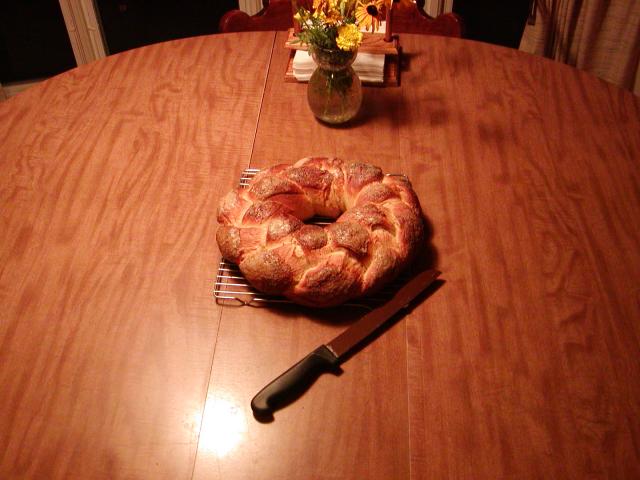
Danish Rye bread
Thank you Mini Oven for your suggestion. I found the recipe at ABC-h2g2-Danish Rye Bread, if anyone is interested to read it.
Abigail

Thank you Mini Oven for your suggestion. I found the recipe at ABC-h2g2-Danish Rye Bread, if anyone is interested to read it.
Abigail

I know this question has been asked a lot, but I just can't seem to find my answer and TFL was on it with my last problem so here it goes again.
I have been getting great bread. Everything looks as it should. My only real problem is wet crumb, some even describe it as "oily". I have been checking my temps after cooking, around 200-210 F, so that should be right. My recipe is as follows.
600g flour (Usually all white, but my last loaf had 2/3 WW and still wet on the inside)
420g water
1/4-1/2 tsp yeast
1-2 tsp salt

Making bagels or challah...the process of forming the dough into 'ropes' is brutal..a real battle. It seems to have a mind of its own. It springs and shrinks, nothing like I see in the youtube 'how tos'.... I try and coax it into an even rope like shape and it fights me! I end up with a lumpy, thick, thin stretch of dough that, when proofed, still shows some signs of having gone through a war. What am I doing wrong??

I'm trying to share my recipe with a friend in Israel - and got to the molasses and went &*^!@. She doesn't even know what molasses is. What's a substitute for that part of the world? If she were in the UK I might think treacle. What about honey? Am I correct that it's in there as a sweetener for both flavor and a sugar-boost for the yeast as well as to help with the caramelization of the crust?

Hi all:
Just a very geeky fyi for those who are microbiologically curious...

Hello,
I recently got a fibrament baking stone. It works AWESOME for pizza. With artisan loaves (like baguettes, or sourdough boules) I get great oven spring, but the bottom gets burned way before the rest of the loaf is done. Any suggestions?
-Adam